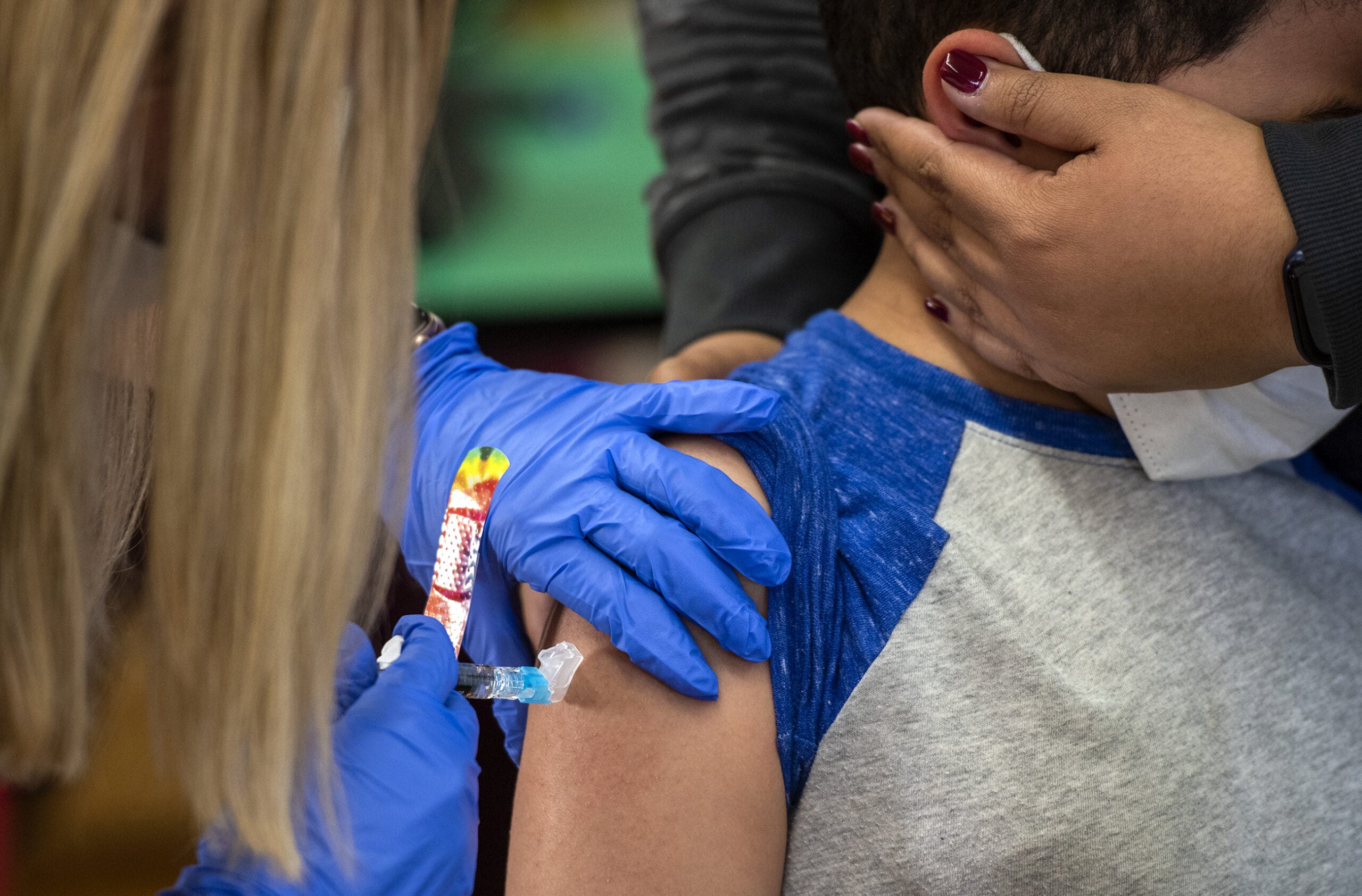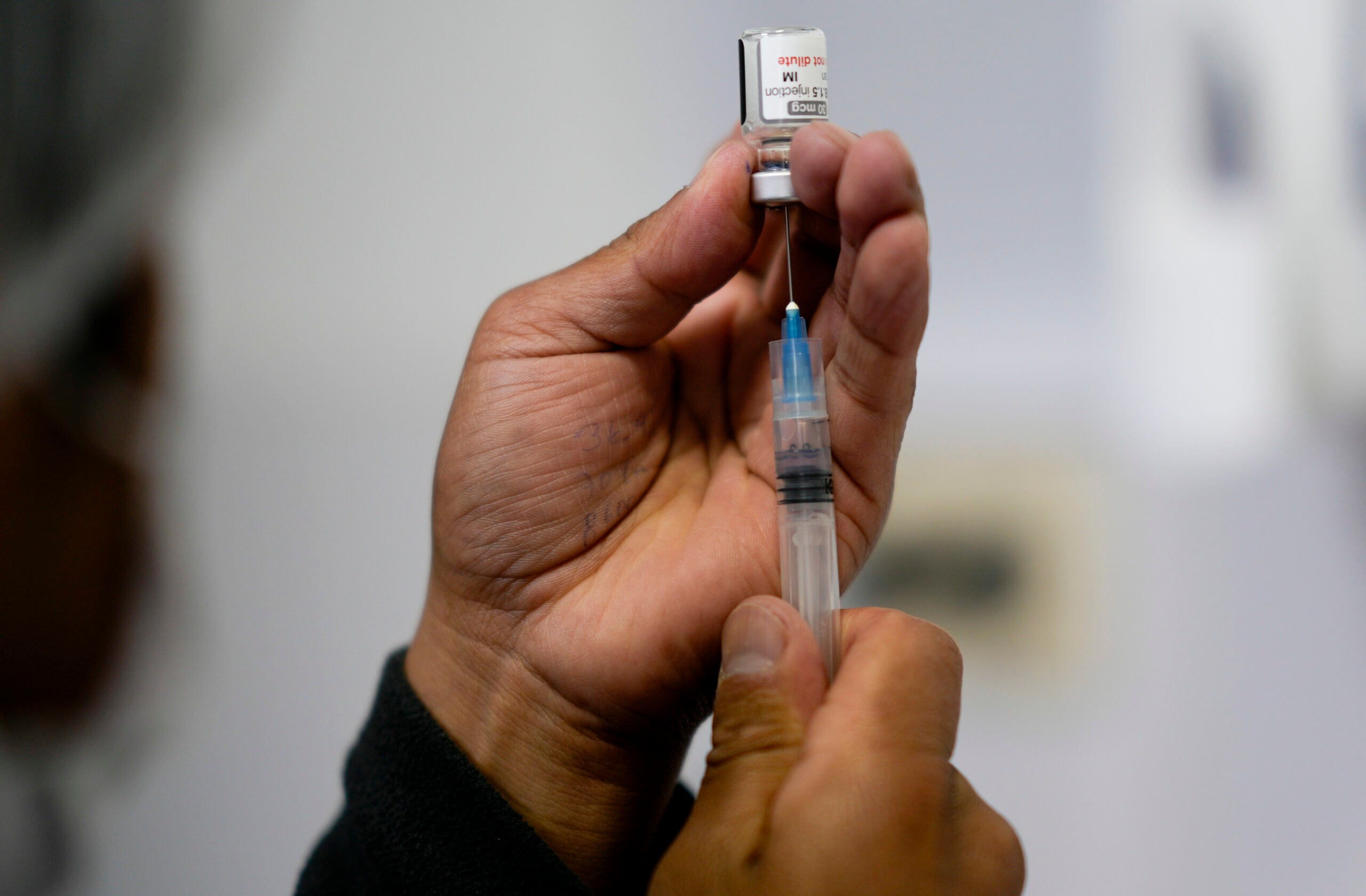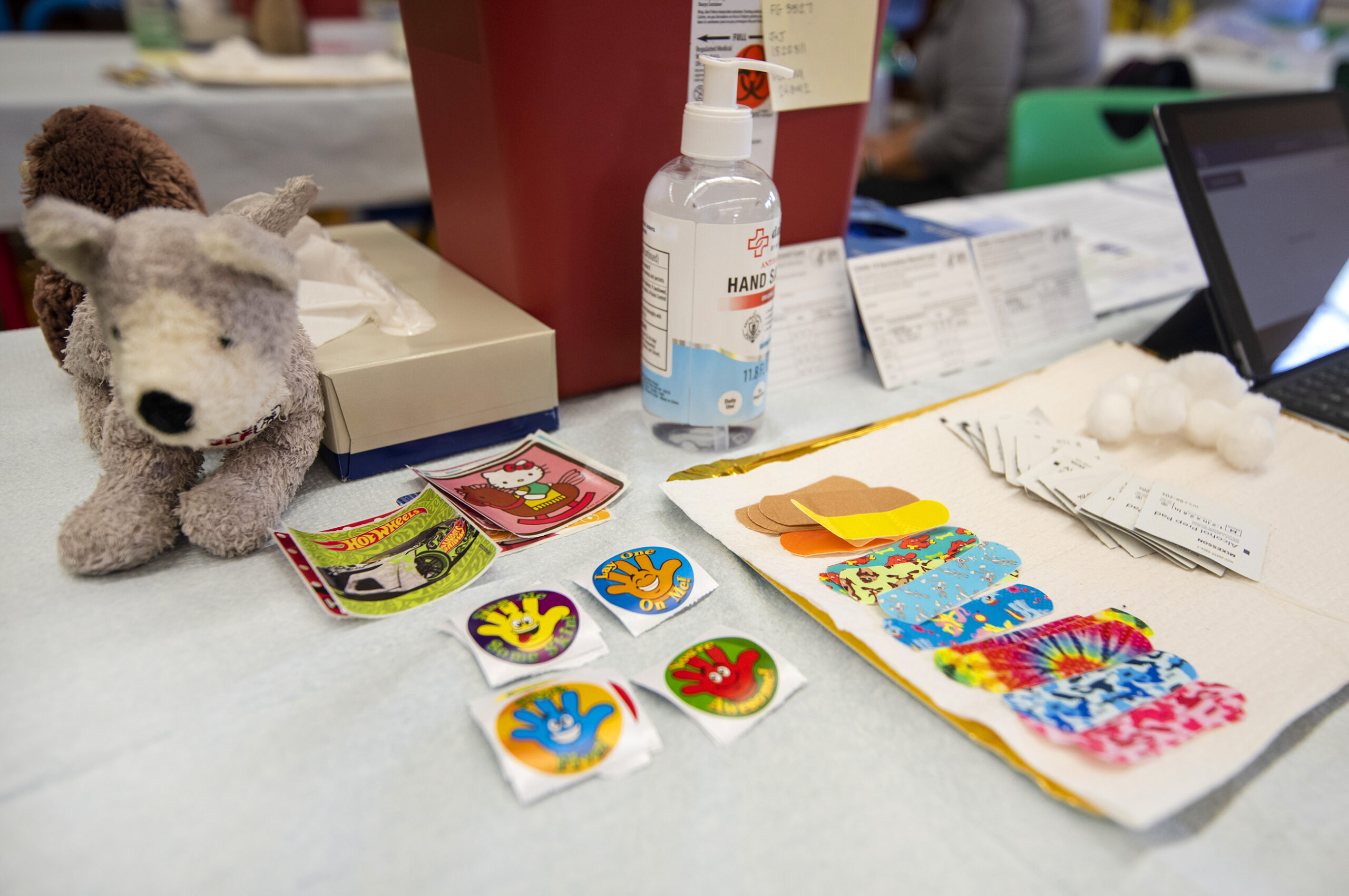The state Department of Health Services reported 27 deaths from COVID-19 on Wednesday, the highest single-day number since the pandemic began, as new cases in Wisconsin continue to rise to record-high levels.
The state’s seven-day average is at 2,334 new cases per day in Wisconsin, based on the latest data published by DHS. There were 2,319 new cases of the disease reported on Wednesday.
One week ago, the average was 1,888 daily cases. Daily new cases have been rising steadily since the beginning of September.
News with a little more humanity
WPR’s “Wisconsin Today” newsletter keeps you connected to the state you love without feeling overwhelmed. No paywall. No agenda. No corporate filter.
As cases climb, the Wisconsin Department of Health Services introduced a revamped COVID-19 tracking page on Wednesday, in an effort to help local communities manage the surge.
The dashboard now includes more COVID-19 activity information for regions and counties. It will now highlight places as having “very high” COVID-19 activity, in addition to the “high,” “moderate” and “low” designations it previously used. Places with “very high” COVID-19 activity have at least 350 positive cases per 100,000 people — three times higher than areas considered to have a “high” disease burden of 100 cases per 100,000 people.
The DHS’s new dashboard has also introduced a new way of measuring the test-positive rate. The new metric measures positivity by total number of tests, not by total number of people who have received a test. The distinction takes into account people who get tested multiple times.
The website has also been changed so that local communities can better understand infection rates and trends in school age children. Cases are broken down by youth age group. It also has suggested actions local communities might want to take depending on the severity of COVID-19 outbreaks. Those include limiting the size of gatherings and closing bars.
The latest figures bring the overall total of positive cases in Wisconsin to 122,274, according to DHS, and the total number of deaths to 1,327.
According to the DHS, 17.2 percent of people who got tested for COVID-19 for the first time over the past week were positive for COVID-19, and 9.2 percent of all tests came back positive.
The test positivity rate is often read by public health officials as a measure of overall testing levels. A high rate could indicate that testing in the state is limited, and skewed toward those already flagged as potentially having COVID-19. A lower rate could indicate testing is more widespread.
Changes in the test positivity rate can also speak to COVID-19’s spread, if the size and makeup of the testing pool stays consistent.
Wisconsin’s daily testing capacity — based on the availability of test supplies and adequate staffing — has grown from 120 available lab tests in early March to 39,159 as of Wednesday. There were a total 20,112 test results reported to the DHS on Tuesday.
Overall, DHS has recorded a total of 1,545,521 people having been tested over the course of the pandemic, with 1,423,247 testing negative.
In its latest COVID-19 activity update on Wednesday, 45 counties were shown to have “very high” levels of COVID-19 activity, with the rest at “high” levels. The Fox Valley region had the most new cases per 100,000 residents over the past two weeks, at about 1,036, while the North Central region showed the highest growth in cases over that same period. Wisconsin overall has a very high level of activity, according to the DHS.
Hospitalization rates are also hitting new high levels. According to DHS, there were 646 COVID-19 patients currently hospitalized as of Tuesday. A total of 7,300 people have been hospitalized because of the disease, or 6 percent of all positive cases.
The new dashboard no longer tracks the gating metrics used in the Badger Bounceback Plan, that was introduced in Gov. Tony Evers “Safer at Home” order.
Editor’s Note: WPR has updated the language it uses in its daily coverage of COVID-19 statistics to clarify the distinction between COVID-19, an infectious disease, and the coronavirus (SARS-CoV-2) that causes that disease.
Wisconsin Public Radio, © Copyright 2025, Board of Regents of the University of Wisconsin System and Wisconsin Educational Communications Board.







